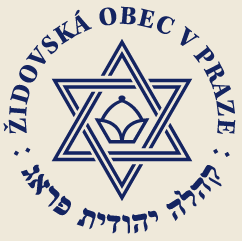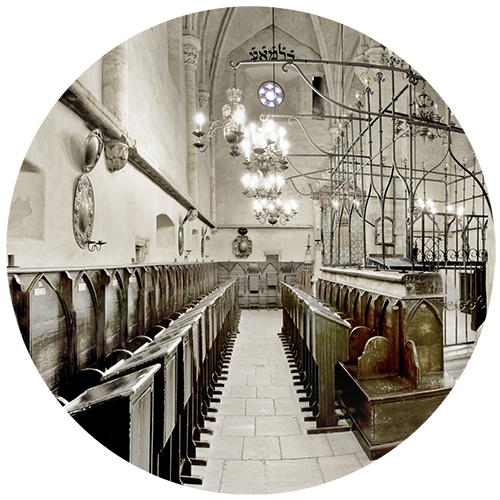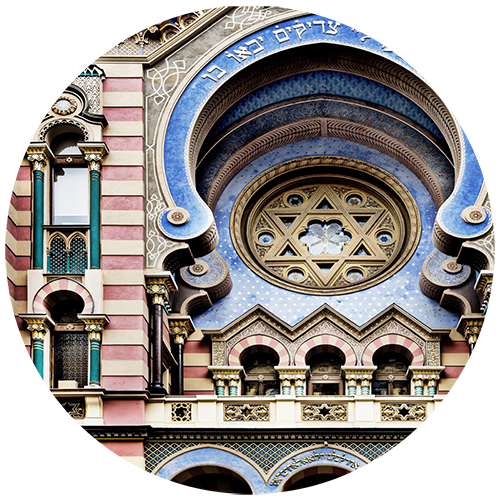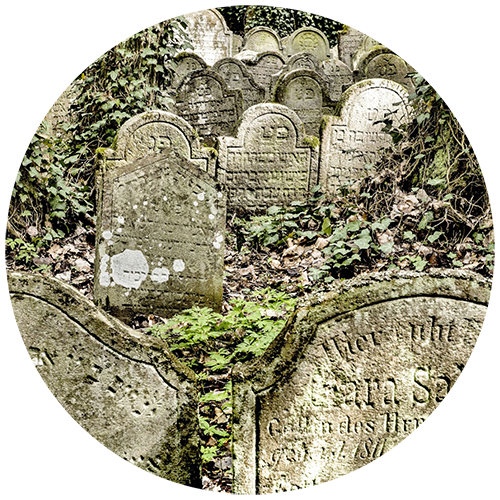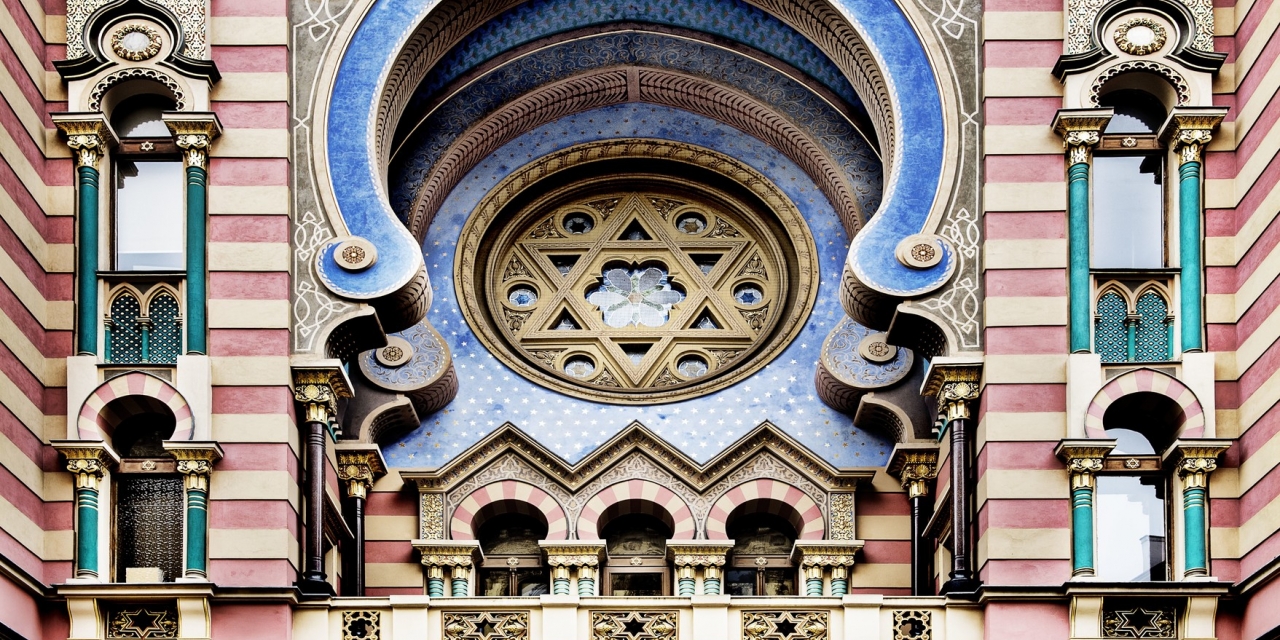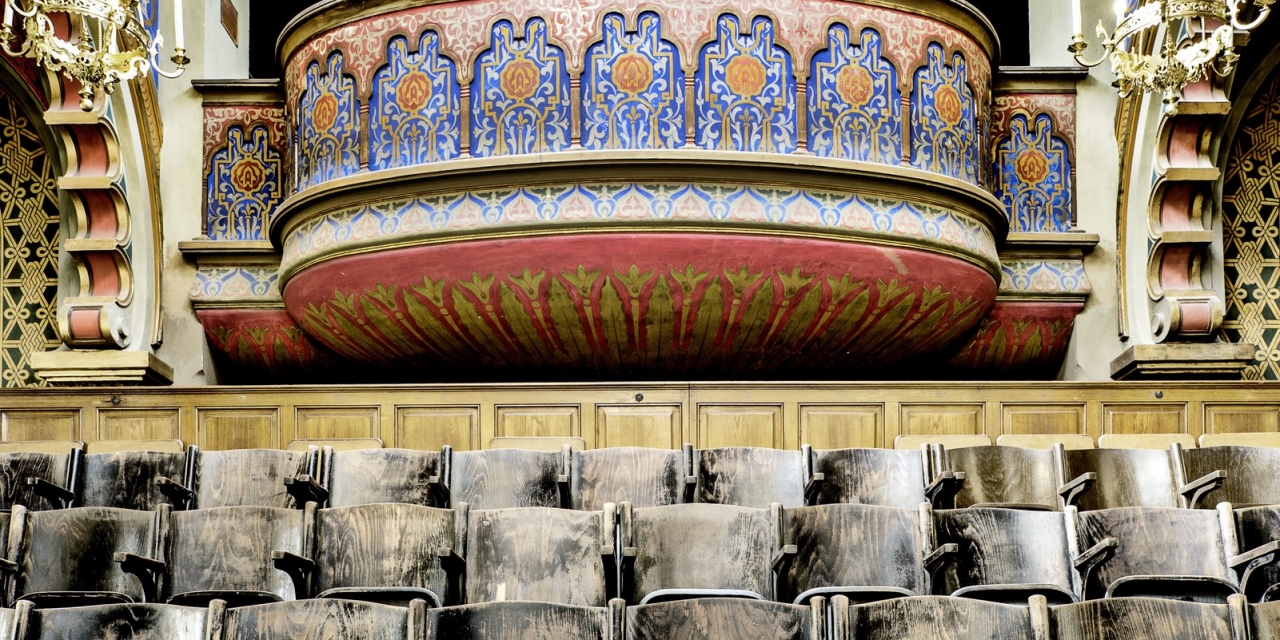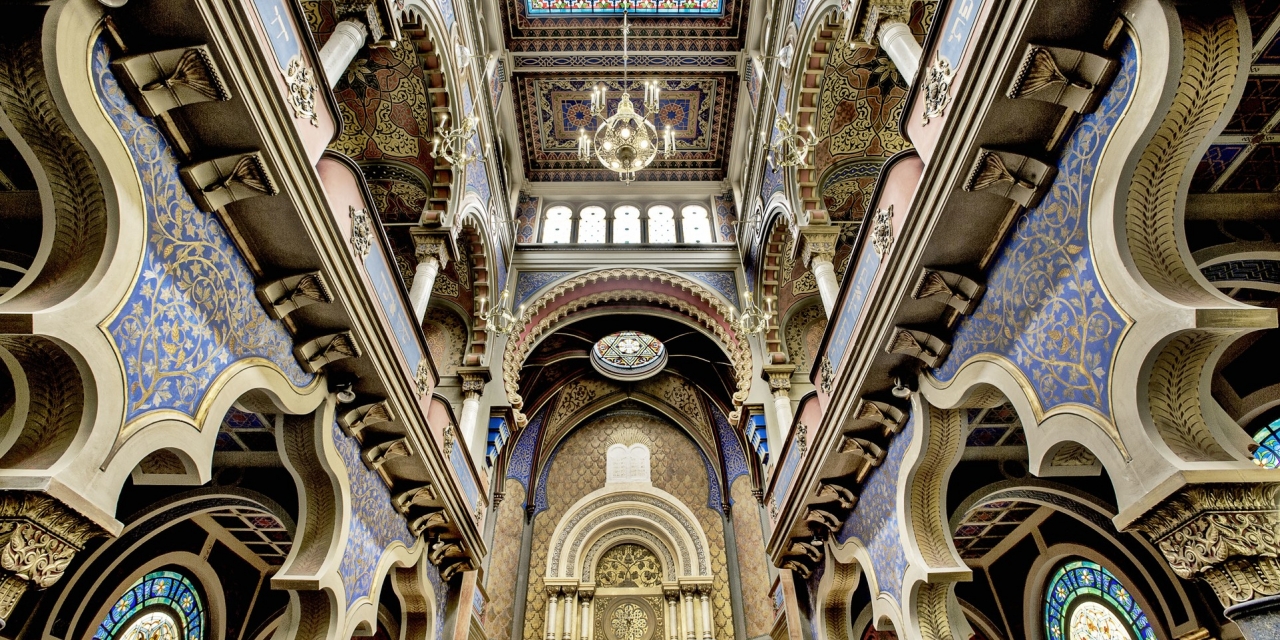Jerusalem Synagogue
Open daily except of Saturdays and Jewish holidays
10:00-17:00
on-line
Jeruzalémská 7
Prague 1
|
Adults |
150 CZK |
|
Children under 6 |
free |
|
Children under 15 and |
100 CZK |
Reduced entrance fee for visitors with valid ticket to the Jewish Town sites:
|
Adults |
100 CZK |
|
Children under 6 |
free |
|
Children under 15 and |
80 CZK |
The synagogue was built between 1905–1906 by a Viennese architect and an Imperial construction supervisor Wilhelm Stiassny, as a replacement for three Synagogues (the Zigeiner, the Velkodvorská, and the New) destroyed in the years 1898-1906 during the redevelopment. Although the association which took up the challenge of building the Synagogue was founded in 1896, it took ten years before the Synagogue was inaugurated on 16 September 1906. Initially it bore the name of the Jubilee Temple of Emperor Franz Joseph to commemorate the 50th anniversary of his reign, in 1898. After WWI, the present name, the Jerusalem Synagogue, based on the street name where it stands, slowly gained ground. The street name has nothing to do with the Synagogue, however: the street is named after the Church of Jerusalem former chapel of St Henry, nearby.
The Jerusalem Synagogue is distinctive in that it is one of only eight Synagogues built to W. Stiassny’s design, where services are still held. The only interlude was during the war years 1941–1945, when it acted as a repository of seized Jewish property.
Besides its religious role, the Synagogue is a cultural and exhibition venue. The concerts regularly held here let visitors listen to the uniquely preserved original organ by Emanuel Stephen Peter.
Hesham Malik - "18"
The '18' exhibition at the Jerusalem Synagogue in Prague showcases the work of internationally acclaimed artist Hesham Malik, whose paintings explore the history and present of Jewish communities around the world. Each work tells a story, capturing a fragment of Jewish identity and highlighting the resilience and diversity of these communities - from Tokyo to Mexico City.
The number 18, which in Hebrew symbolises life (chai), is a key motif in the exhibition. Using vibrant colours and layered textures, Malik links historical events to personal stories, revealing how deeply Jewish identity is tied to traditions, rituals and beliefs.
A graduate of prestigious art schools and specialised courses in Jewish history and culture, Malik combines art with education and social outreach. His works, which have been exhibited around the world, are not only visually fascinating, but also inspire reflection on themes of unity and the interconnectedness of different cultures. The '18' exhibition is a powerful testament to the richness and vitality of Jewish communities.
The exhibition will run at the Jerusalem Synagogue from 17 March to 4 May 2025.
